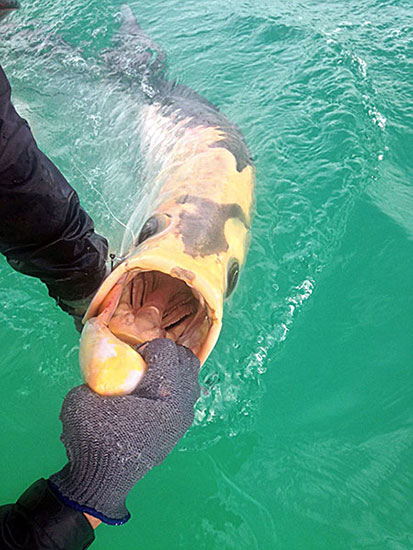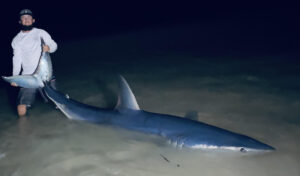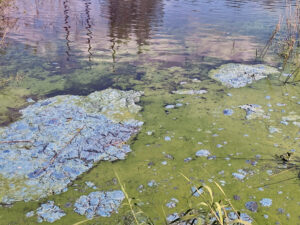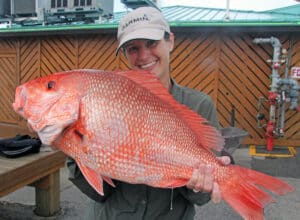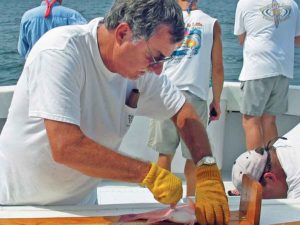On June 5, Capt. Clark Wright, who runs a charter service on Florida’s west coast, reeled in something that he has never seen before.
“In my 20 years of tarpon fishing, I’ve never seen a tarpon like this before,” Wright tells Sport Fishing. “I told the visiting angler and my mate that we had to get this tarpon to the boat.”
Wright said that seeing it from afar, the tarpon started to jump and roll, but had an orange tinge and spots on it. They caught the tarpon at 7:30 a.m. on a live blue crab off Anna Maria’s coast, along with his mate Matt Smithman. They were on a mission from there on out — to get a closeup of the tarpon.
“We were hooting and hollering,” he says. “The angler, George Seibel, might be the luckiest angler out there right now. He came down from New York with his wife and caught this tarpon. We took a DNA sample and successfully released him. He lives to fight another day.”
Kathryn Guindon’s, an assistant research scientist at the Florida Fish and Wildlife Commission’s (FWC) Tarpon Genetics Recapture program, first question to Capt. Wright was the expected, “Did you take a DNA sample?”
“I have heard reports over my past ten years of tarpon like this, but never has someone retrieved a DNA sample to send to us,” says Guindon. “It looks similar to a koi fish.”
From first glance, some people might suspect the tarpon as an albino species. Guindon says that it’s not an albino tarpon, rather a piebald tarpon, which means it bares spots of unpigmented patterns. She says that it’s a piebald by today’s terms, in the 1930s this was considered an albino species.
“In 1936, an ‘albino’ tarpon was caught and recorded,” she says. “It actually hangs in the American Museum of Natural History — it looks just like this one.”
